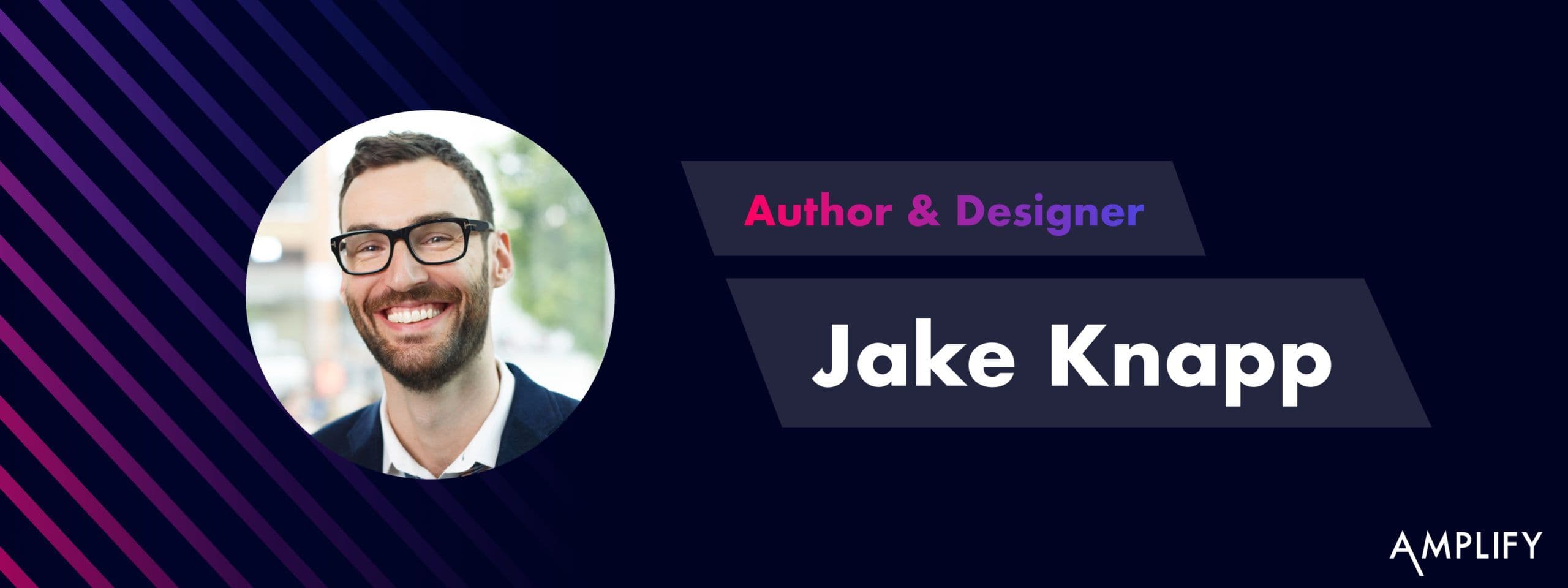Jake Knapp on Making Time (for Ourselves, Products, Customers, and Teams)
Product designer and bestselling author Jake Knapp advocates for being extremely deliberate with how we invest time, attention, and creative energy.
Jake Knapp knows a thing or two about product design. He spent a decade at Google and Google Ventures, working on programs and platforms—Gmail and Google Hangouts among them—that are household names today. These days, he’s known as the mastermind behind the “Design Sprint”—the now-famous process of bringing a product hypothesis from formulation to tested prototype in just five days—and his bestselling book, Sprint, describes this journey in detail.
Shortly before Knapp hit the stage at the Amplify 2018 conference in early October, his latest book, Make Time, had already hit the shelves. This new work focuses on how we can maximize the time we spend doing the things we want to be doing, and it draws from Knapp’s extensive experience nurturing efficiency, fostering distraction-free workspaces, and putting user experience first.

Amplitude: What is a “big picture” theme or overarching lesson that you’ve observed in product management?
Jake Knapp: We need to respect people’s time and attention, no matter what. This is true of the people we work with—we need to respect their time. That’s where a lot of the thinking for the design sprint came in. We need to respect our customers’ time and attention. And you have to respect your own time and attention too—you have to put on your own oxygen mask, because if your own focus is scattered and you’re overworking yourself and constantly reacting and stressed, you won’t be able to get the most from your team or build the best product for your customers. It’s that idea—how individuals can focus on what’s most important—that Make Time is all about.
A: How do you see that consideration for the customer playing out across platforms? How can product teams balance between engagement and efficiency?
JK: It is so easy—and it’s getting easier—to build products, and there’s a lot of competition for attention. So the products that win, even if they’re well-intentioned, often have mechanics that steal our energy away from what we really want to be doing. Companies make money when we use their products; and so for them to make choices that actually mean we’ll use their products less is very difficult.
Product companies—and product designers—have a huge responsibility. And I think product designers are often the first to be aware of this challenge.

A: What is the key lesson you would pass on to your fellow product designers?
JK: I don’t wish a near-death experience on anyone, but I think that’s the mindset that anybody who’s building products has to have. We’re going to die. We have a limited amount of time on this earth. Sorry, that’s intense, but we’ve got to get real about how we spend our time. We waste too much of our own time, too much of our team’s time, and too much of our customers’ time. If you build products, I would love to pass on a passionate love of days and hours and moments to you. I don’t know if I can do that, but I’m going to be trying every way I know how for the rest of my life.
A: How can developers and designers make better decisions when it comes to optimizing products?
JK: I believe you should have a true, intrinsic motivation; you should be fired up to do the thing that you’re doing. And if that’s building a product, you should be doing it in a way that comes from your heart, not just from your brain. I don’t want to chastise designers or product developers. I want to say, take a good look at yourself, figure out how you can be most in control of your new technology, and once you do that—once your eyes are open to that—I don’t think you can unsee what you’re building. I hope this awareness will lead us to the right kinds of products.

Cara Harshman
Former Managing Editor, Amplitude
Cara was formerly the Managing Editor at Amplitude. Before joining this crew of super-passionate, smart individuals, she wrote and spoke a lot about A/B testing and personalization at Optimizely. She has spoken at MozCon, CTA Conference, Opticon, and Learn Inbound.
More from Cara




